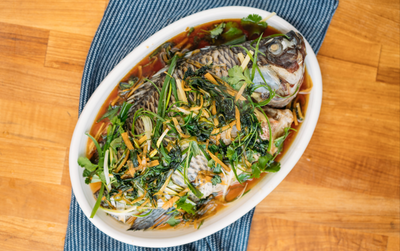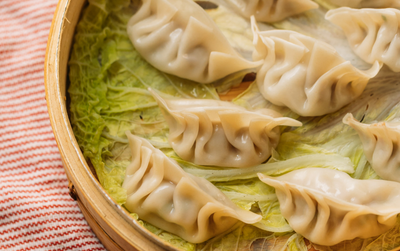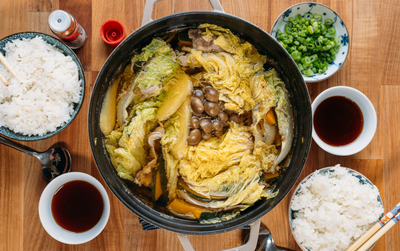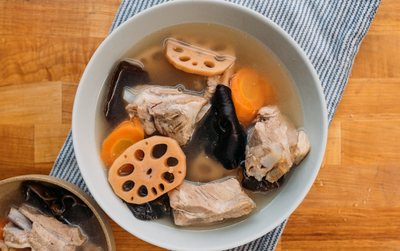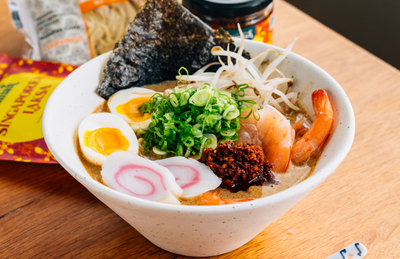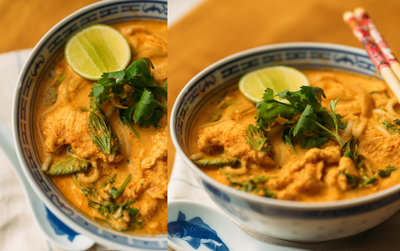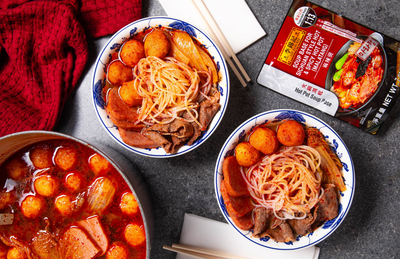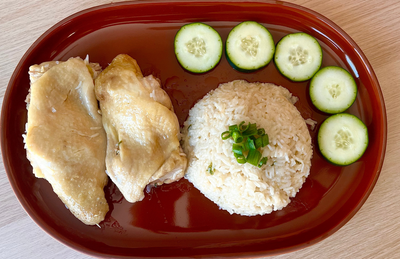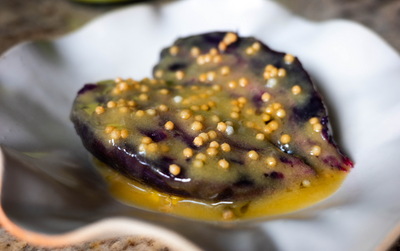10 Oyster Sauce Substitutes: The Ultimate Guide
Oyster sauce is a traditionally Southern Chinese ingredient. The flavor profile is salty and sweet with a thick and velvety texture.
Umami is the name for flavors that are rich and hearty and the full profile of savory and this is definitely one of them.
Expect to see it used in hearty dishes in Vietnamese, Cantonese, and Thai cuisine, especially. It is a go-to for stir fry, adding richness to vegetable dishes and being very popular in meat dishes to enhance the natural flavors of the protein.
While it is a sauce derived from an oyster, don’t expect a full fish flavor profile. It will be subtle and produce more of a lingering aftertaste. It is a deep chocolate brown color, but don’t expect it to be sweet forward; it’s going to be more earthy.
Having a bottle of oyster sauce on hand will enhance any savory dish and amplify flavor ten-fold. But what happens if you’re out? Don’t worry! We are breaking down some oyster sauce substitutes and why they work.
What Are Some Good Oyster Sauce Substitutes?
There are a variety of reasons you might need a substitute for oyster sauce. If you’re vegan, oyster sauce is out. If you have a shellfish allergy, same thing. Maybe you’re trying a new recipe and you don’t keep oyster sauce on hand and dinner time is approaching. Or you’ve run out and need something to work in a pinch. You could potentially need one that is gluten free but all the options at your market contain wheat or soy.
Whatever your need, these are the best oyster sauce substitutes to ensure you get the right flavors and savory qualities.
1. Fish Sauce
Fish sauce makes a great substitute because of the flavor backbone similarities. Oyster sauce has a less subtle full flavor of fish compared to actual fish sauce, but similar nonetheless. Fish sauce will also be saltier and have a lesser amount of sweetness. Also important to note is that fish sauce will be thinner. Part of what makes oyster sauce unique comes from the texture. That is lost with fish sauce.
Nevertheless, you can utilize fish sauces for a similar flavor effect to hearty meals. It will play better with sauteed fish dishes than meat options, but will add a layer of flavor either way.
To better emulate oyster sauce, try adding a bit of sugar and cornstarch when substituting with fish sauce to increase sweetness and consistency. Fish sauces also vary in terms of either containing gluten or being gluten-free, so check labels if you are gluten sensitive or intolerant.
2. Hoisin Sauce

Hoisin sauce is sometimes equated to a BBQ sauce. It’s tangy and slightly sweeter than oyster sauce, but has a very similar consistency. It is usually a vegan substitute, however, and the mix of soybeans and garlic that make up part of the base of the sauce complement the sweet flavors well.
This is a great sauce to be added to chicken lettuce wraps or spare ribs. These white meats work well with this sauce as the lighter flavors from the protein let hoisin sauce take center stage. Again, if gluten is an issue, make sure to read the label before purchasing as only some options are gluten-free.
3. Soy Sauce
If you’re in a bind, soy sauce makes a great substitute for oyster sauce. For one, it’s a very popular sauce (arguably one of the most popular sauces in Asian cuisine), so finding it in stores will be easy. Second, it’s a vegan option, so if traditional oyster sauce won’t work, soy sauce can step in. It has a slightly thinner consistency and a lot more salinity than oyster sauce. Adding a tablespoon of sugar can balance out the saltiness of soy sauce as well as create a flavor closer to oyster sauce.
It works well added to items and dishes that are light in flavor. Chicken is a perfect protein for soy sauce as it will absorb the flavors well. Boiling a bowl of noodles and adding soy sauce with a few toppings like fresh green onions, scrambled egg, and a few veggies like bok choy make a simple, healthy snack. The noodles need flavor and the green onions would add freshness and herbaceous sweet quality that work with the salty notes of the sauce.
4. Teriyaki Sauce
Teriyaki sauce will have a thick consistency almost identical to oyster sauce. However, it is more sweet and tangy rather than earthy and savory. Teriyaki sauce will be another one of those sauces that you can expect to find everywhere, including even finding different varieties of teriyaki sauce in your average American grocery store. Depending on what you’re making, you can pick different flavorings of teriyaki sauce to give you the same profile of oyster sauce.
Regardless of what style you find, teriyaki sauce is great for vegetables, stir-frys, and as a marinade for meats. If you want to pull out more savory qualities, add some mushrooms to your dish. While teriyaki is a vegan option for sauces, one of the main ingredients is soy sauce, so to get a gluten-free version you need to find one using tamari.
5. Black Bean Paste

Black bean paste is made with fermented balck soybeans, sugar, vegetable or chicken broth, and a ton of garlic. You’ll expect spicy sweet notes from the combination of garlic and sugar and a savory backbone. In Chinese cuisine, you can expect recipes from the Sichuan, or Southwest, region to incorporate this into dishes. Translated into English, Sichuan is Szechuan cooking, so think spice and heat forward dishes.
Expect black bean paste to have the same consistency as oyster sauce thanks to cornstarch. But, black bean paste brings the heat. Unlike oyster sauce that is savory and sweet, black bean paste is more garlicky with subtle sweetness and pockets of heat. Use this when you want to add some extra fire to your fire meals.
6. Kecap Manis (Sweet Soy Sauce)
This is a sauce derived from Indonesian cooking and it will bring a little more sweetness out in your dishes. Traditionally, oyster sauce will balance out more to achieve an umami profile. Kecap manis, on the other hand, comes with the sugary notes and balances out with tart notes from vinegar.
Soy sauce, sugars, and spices are simmered slowly together until they reach a thick consistency. It acts very much like a balsamic vinegar in Indonesia; it’s versatile and brightens up any dish.
You have a lot of range with kecap manis. It can be used for many of the traditional dishes oyster sauce goes into (satays, fried rice, stir-fry noodles), but will also do wonderfully as a salad dressing or glaze. Balancing out the sweetness of the sauce can be achieved by adding savory and full-flavored vegetables and proteins to your dish.
7. Mushroom Broth
For vegan diets, mushroom broth is the perfect substitute for oyster sauce. Made in a very similar manner as oyster sauce, mushroom broth is thick, creamy, and packed full of umami. It is a straightforward recipe and can be made fresh at home for even a novice home chef, but can be purchased, too, so it’s ready when you’re cooking.
Shiitake mushrooms are one of the more popular types for this sauce, as they have a full heartiness and savory quality. Mushroom broth is a lighter caramel color compared to the darker molasses color of oyster sauce, but as a substitute, it is one of the better options. Mushrooms are just naturally so savory that you will get a nice balance of sweet, salty, and savory notes. Substitute mushroom broth for anything you would use oyster sauce for to get a vegan option with similar flavors.
8. Worcestershire Sauce with Soy Sauce and Sugar
Worcestershire sauce will have the same backbone of fish flavors that oyster sauce has thanks to the anchovies in its recipe, but punched up a little. To balance out these fuller fish flavors, add soy sauce and sugar to get closer to a more umami profile. This sauce will be thinner than oyster sauce, but will work for many dishes without changing the flavor profiles too much.
Pro Tip: Be sparing with the worcestershire. It is a powerful flavor and only a few drops are necessary most of the time. This will make a really delicious topping for noodles or as a marinade for meats before cooking.

9. Anchovies
Anchovies are a salty, savory, full-flavored small fish that add a delicious fishy brightness when used in rich dishes. It is one of the main ingredients in caesar dressing and adds the balancing act necessary to create a union between the pepper and garlic notes. Anchovies will do the same when added in place of oyster sauce.
Creating a savory meal that is high in salinity but needs just a small pop of something else? Add a few anchovies to the mix. Even if you don’t want to eat them whole, using them to brighten up your dish in the cooking process will add a delicious depth of flavor. Sautéeing them with noodles and adding soy sauce and sugar will create a simple and light sauce packed to the brim with savory balance.
10. Tamari
Tamari is a wonderful option for those that need a vegan and gluten free sauce. It is made with fermented soybeans, but skips the wheat additives of most soy sauces. It is also thicker and darker in color than soy sauce, and is also more balanced. You’ll expect salt forward flavors from soy sauce, but tamari will have a balance between salty, sugary, and savory qualities.
What Is the Best Vegetarian Alternative to Oyster Sauce?
There are two options here that work: mushroom broth and tamari. They’re both vegetarian, gluten-free, and balance out flavors beautifully. Mushroom sauce will be slightly more savory and will have a heartiness to it that tamari doesn’t supply.
If you want something to add to a dish during the cooking process, go mushroom broth. But if you’re looking for something as a finishing sauce that will still pack in flavor, go tamari.
How Is Vegetarian Oyster Sauce Made?
There is a vegetarian oyster sauce! It uses shiitake mushrooms as the base in place of the oyster juice.
Which Oyster Sauce Substitutes Are Vegetarian?
A lot of the options are vegetarian, actually. Fish sauce, Worcestershire, and anchovies are the options that are not vegetarian (but are pescatarian!). Some recipes call for chicken broth in mushroom broth, so if you’re shopping for a shelf-stable option, read the ingredients list.
How Does Fish Sauce Differ from Oyster Sauce?
Fish sauce and oyster sauce have similar qualities in that they are both derived from seafood juices. However, oysters are shellfish, and provide a more earthy flavor profile than fish. Fish sauce will be a fuller fish flavor and rely on this quality more than oyster sauce. The flavors from the oyster juice work more behind the scenes and settle on the back of the palate.
Does Oyster Sauce Taste Like Fish?
In short, no. Oyster juices provide these earthy qualities that don’t taste like fish. You will taste the shellfish, but it’s a very delicate flavor quality, and subtle as well.
The Bottom Line
There are many ways to achieve an umami flavor profile. Adding the perfect balancing act between salt, sugar, and savory flavors can mimic oyster sauce without having the sauce on hand. At the end of the day, finding the sauce that is right for you as well as the flavor profiles you enjoy always takes priority.
Umamicart has so many options, we are sure you’ll find the right sauce for you!
Sources:
What Is Oyster Sauce? | The Spruce Eats
6 Terrific Oyster Sauce Substitutes | The HealthLine
What Is Oyster Sauce & What Does It Taste Like? | The Tolerant Vegan





























